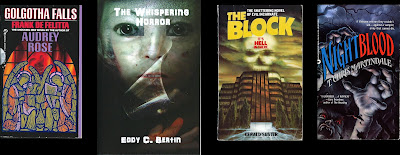by Robert Silverberg, Cary Bates, and Gene Colan
DC Science Fiction Graphic Novel
1985
This 48-page DC Science Fiction Graphic Novel was published in 1985 and features cover art by Bill Sienkiewicz, interior art by Gene Colan, painted colors by Neal McPheeters, and lettering by Gaspar Saladino.
Silverberg's novella 'Nightwings' was published in 1969 and won the Hugo Award that same year. The adaptation for this graphic novel was done by Cary Bates.
Without disclosing any spoilers, I'll say that the graphic novel stays true to the novella, which in turn was Silverberg's effort to create a story that upended the traditional sci-fi narrative in which a heroic, square-jawed Terran rescues the distressed damsel from odious aliens.
'Nightwings' takes place in a far-future Earth where civilization is in the grip of Entropy (very New Wave-ish) and deals with three misfits who join together to travel to 'Roum' (i.e., Rome). These outcasts are the Watcher, an elderly man who scans deep space for signs of danger; Gormon, a gengineered lizard-man who takes a dismissive view of society; and Avluela, a lithe young woman who can - at night-time - sprout wings from her back and take flight. Conveniently for this graphic novel, she does this in the nude.............
At the time he pencilled 'Nightwings', Gene Colan was moving away from the more traditional illustrative style of mainstream comics, and providing artwork that was looser and more abstract...............a style that incidentally was also easier, and quicker, to complete.
I can't say I find Colan's work for this graphic novel to be all that impressive. Indeed, that the artwork comes across reasonably well is due to the skill of painter McPheeters.
Summing up, Silverberg's novella is one of those rare New Wave-era pieces that has aged well, benefiting from an ending that had an unexpected, even 'shocking' tenor back in 1969. I can't say that this graphic novel adaptation represents a memorable treatment of the story, but if you are a fan of Silverberg's work and see it on the shelf of a used bookstore, you may want to pick it up.









































































